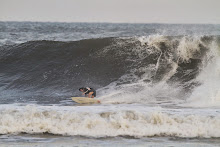
Here is the final “Abstract”, as written for the Western Society for Naturalists. We finished the writing of it at 4:59 PM a couple of days ago, a little less than a minute before the deadline.
But that is the custom among busy scientists. When I was a postdoctoral fellow in Tom Carew’s lab at Yale, the grad students and post-docs ponied up a milk shake for the person who waited the very longest to collect a data point used in the abstract. This used to drive Tom utterly crazy. Sometimes, the results weren’t certain until a day before. I think the record (attained by a crazy French Canadian grad student, who is now a very successful scientist) was a data point that got included in a statistic an hour before the deadline.
So, this year, we had much more time for our Abstract. Our data were collected at least a few days before the deadline. All we had to do was just write the sucker. Of course, I also talked John into presenting an additional poster with his very sexy limpet data from last summer, so he and I had to wrangle two abstracts. But we did it just fine.
The key thing with abstracts is brevity, and conciseness. Perhaps I should rewrite that sentence. Abstracts need to be concise. That’s all. No need to add brevity, for that’s part of the word concise. Make sentences square. Active verbs. Say I and we all you want, especially if it makes your sentence more concise.
I hesitate to put our abstract out there in front of all of you. I know there are many among you who could have written it clearer, sexier, and more concisely. But I am discovering the value of humility, and shared discovery in the scientific process. Every day I discover this. Rediscover it.
Here’s the abstract.
Lobsters exhibit unprecedented attack behavior on sea hares inside marine life protected areas.
A growing body of evidence suggests that marine protected areas can significantly change the density of fished species. Such direct effects can be of paramount importance to community structure. However indirect effects of management decisions can be equally profound. The present field study examined the indirect effect of a preserve on the dietary breadth of the California spiny lobster, Panulirus interruptus, on Catalina Island, CA. We monitored this keystone predator’s attack behavior inside two separate preserves, and compared it to behavior in neighboring non-protected areas. In particular, we used SCUBA to present the relatively unpalatable sea hare, Aplysia californica to foraging lobsters in the field. No observations of natural attacks by lobsters on Aplysia have been reported prior to this study, and our presentations outside the reserve confirmed this lack of attacking behavior (no attacks, 7 dives, 89 presentations). However, within the two preserves, lobsters attacked sea hares an average of 24.8% of the time (sem = 3.4, Number of Dives = 14; 287 presentations total). In the most vigilantly protected part of the preserves, this attack frequency increased to 34.5% (sem = 2.0; Number of Dives = 7; 93 presentations). We conclude that marine preserves cause lobsters to broaden their diet, thereby consuming less-preferred species. We hypothesize that this effect is mediated through intraspecific competition: The lack of human fishing on lobsters in the preserve results in greater biomass density (size and numbers) of lobsters, thereby reducing available food. The fact that lobsters in the preserves attack and eat Aplysia may have important implications for other non-preferred food items (e.g., urchins) with stronger functional connections to the ecosystem.

No comments:
Post a Comment